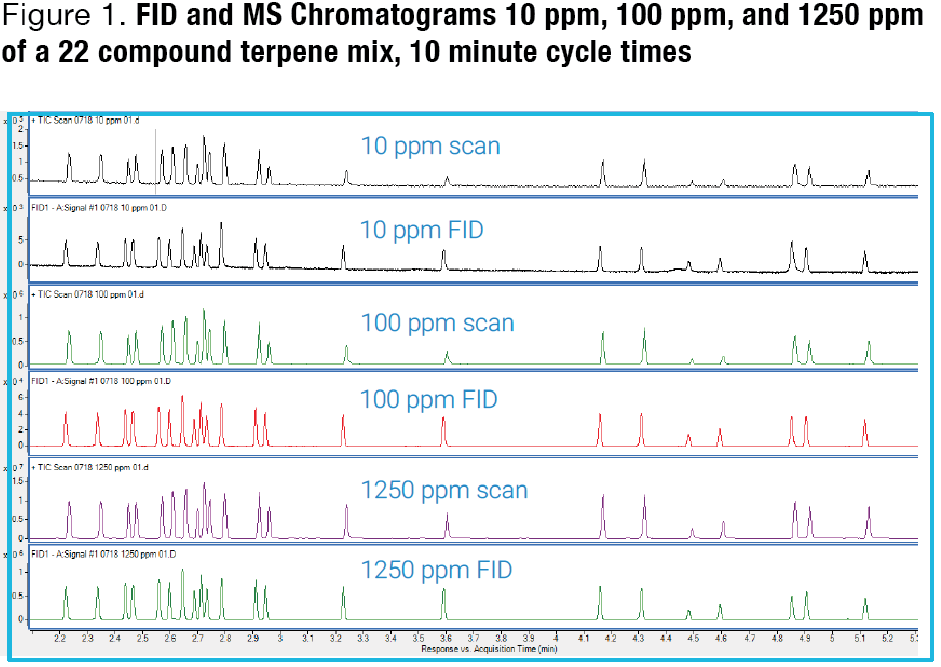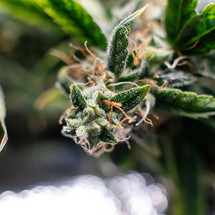Posted by Chrom Tech on 16th Oct 2025
Analysis of Terpenes in Cannabis Using Agilent HSS-GC-MSD with FID
The expanding U.S. cannabis market has fueled the development of countless CBD-based products, including oils, edibles, creams, and capsules. Among the listed ingredients in many of these formulations, consumers often find “terpenes” — compounds that give each cannabis strain its characteristic aroma and flavor profile.
Terpenes are naturally occurring hydrocarbons found in the essential oils of plants. Beyond their role in fragrance and taste, terpenes are believed to influence the overall therapeutic effects of hemp and marijuana by interacting with cannabinoids. As highlighted by Chemical and Engineering News, research into terpene pharmacology continues to evolve, underscoring their growing importance in cannabis analytics and formulation studies.
The Expanding Role of Terpene Analysis
With the Drug Enforcement Administration (DEA) expanding access to cannabis for medical research, analytical testing laboratories are increasingly focused on terpene profiling and residual solvent analysis. Understanding terpene concentration and composition helps characterize cannabis strains, ensure product consistency, and assess product safety for medical and recreational applications.
Agilent’s HSS-GC-MSD with FID: Rapid and Robust Terpene Detection
Terpenes are volatile isoprenes, making them ideal for headspace analysis. Agilent scientists have developed an optimized workflow that allows laboratories to analyze 22 terpenes in just over five minutes using an Agilent Headspace-Gas Chromatography-Mass Selective Detector (HSS-GC-MSD) with a concomitant Flame Ionization Detector (FID).
This dual-detection approach provides both quantitative and confirmatory data, ensuring accurate identification of terpene compounds. The use of GC-MSD with FID enhances reliability for routine cannabis testing while minimizing runtime — a critical advantage for high-throughput laboratories.

Advantages of Agilent HSS-GC-MSD with FID
- Rapid Analysis: Quantify 22 terpenes in just over five minutes, boosting productivity.
- Enhanced Specificity: GC-MSD offers high-resolution separation and mass spectral confirmation.
- Dual Detection: FID complements MSD data for improved quantitation and reproducibility.
- Headspace Sampling: Eliminates solvent interference and simplifies sample preparation for volatile compounds.
Applications in the Cannabis Industry
Terpene analysis supports several areas of cannabis product development and quality control, including:
- Profiling strain-specific aroma and flavor characteristics
- Ensuring batch-to-batch consistency for consumer products
- Monitoring degradation or contamination over time
- Correlating terpene ratios with therapeutic outcomes
As cannabis testing evolves, the combination of Agilent HSS-GC-MSD with FID provides an efficient and reliable method for terpene quantitation, allowing laboratories to meet both regulatory and research demands with confidence.
Partner with Chrom Tech
Chrom Tech is a Minnesota-based worldwide distributor of chromatography and mass spectrometry instrumentation and consumables. We provide vials, well plates, syringe filters, solvent waste containers, and other essential chromatography supplies. Contact Chrom Tech to find the right solutions for your cannabis testing and terpene analysis workflows.
Frequently Asked Questions
What are terpenes, and why are they important in cannabis analysis?
Terpenes are aromatic hydrocarbons that give cannabis its distinctive scent and flavor. Their composition influences the overall therapeutic and sensory effects of cannabis products, making terpene profiling essential for product consistency and characterization.
Why use Agilent HSS-GC-MSD with FID for terpene analysis?
The Agilent HSS-GC-MSD system with FID allows for rapid, robust quantitation of terpenes. Its dual detection ensures precise identification and reproducibility while reducing analysis time to just over five minutes.
Can this method be applied to other cannabis compounds?
Yes. The same workflow can be adapted for the detection of residual solvents, cannabinoids, and other volatile compounds in cannabis extracts using appropriate column and detector configurations.

